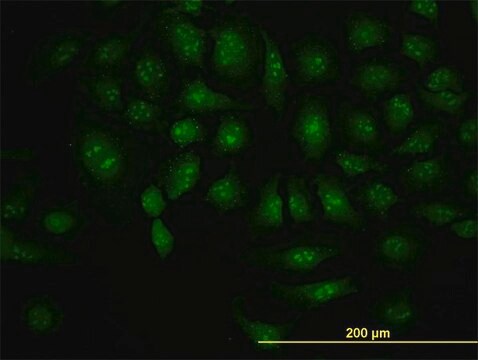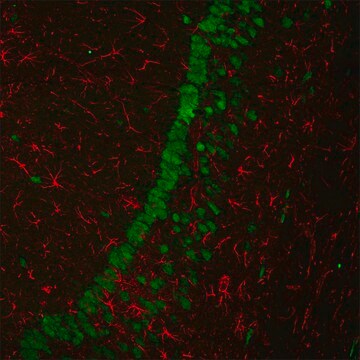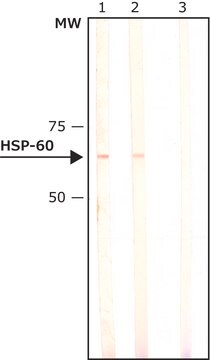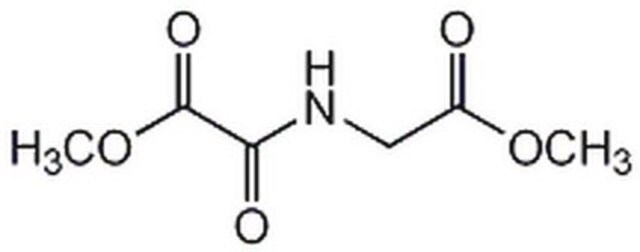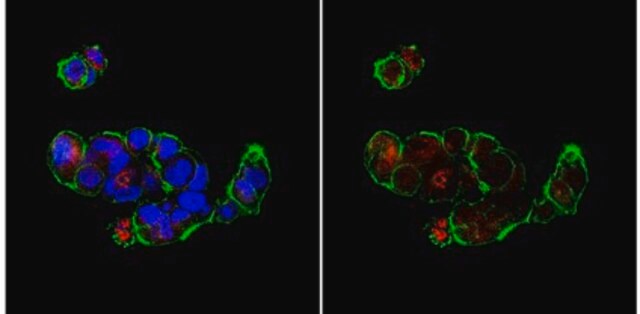SAB4200837
Anti-DDX6 antibody, Mouse monoclonal
clone DDX6-34, purified from hybridoma cell culture
Synonym(e):
ATP-dependent RNA helicase p54, DEAD box protein 6, HLR2, Oncogene RCK, Probable ATP-dependent RNA helicase DDX6
About This Item
Empfohlene Produkte
Biologische Quelle
mouse
Antikörperform
purified from hybridoma cell culture
Antikörper-Produkttyp
primary antibodies
Klon
DDX6-34, monoclonal
Speziesreaktivität
human, monkey, bovine, dog, rat, mouse
Verpackung
antibody small pack of 25 μL
Konzentration
~1 mg/mL
Methode(n)
immunoblotting: 1-2 μg/mL using human HeLa whole cell extract.
immunofluorescence: 10-20 μg/mL using human U-2-OS cells.
Isotyp
IgG1
UniProt-Hinterlegungsnummer
Versandbedingung
dry ice
Lagertemp.
−20°C
Posttranslationale Modifikation Target
unmodified
Angaben zum Gen
Monkey ... DDX6(101053064)
bovine ... DDX6(513906)
dog ... DDX6(479414)
human ... DDX6(1656)
mouse ... DDX6(13209)
rat ... DDX6(500988)
Allgemeine Beschreibung
Spezifität
Immunogen
Anwendung
Biochem./physiol. Wirkung
Physikalische Form
Lagerung und Haltbarkeit
Haftungsausschluss
Sie haben nicht das passende Produkt gefunden?
Probieren Sie unser Produkt-Auswahlhilfe. aus.
Lagerklassenschlüssel
10 - Combustible liquids
Flammpunkt (°F)
Not applicable
Flammpunkt (°C)
Not applicable
Analysenzertifikate (COA)
Suchen Sie nach Analysenzertifikate (COA), indem Sie die Lot-/Chargennummer des Produkts eingeben. Lot- und Chargennummern sind auf dem Produktetikett hinter den Wörtern ‘Lot’ oder ‘Batch’ (Lot oder Charge) zu finden.
Besitzen Sie dieses Produkt bereits?
In der Dokumentenbibliothek finden Sie die Dokumentation zu den Produkten, die Sie kürzlich erworben haben.
Unser Team von Wissenschaftlern verfügt über Erfahrung in allen Forschungsbereichen einschließlich Life Science, Materialwissenschaften, chemischer Synthese, Chromatographie, Analytik und vielen mehr..
Setzen Sie sich mit dem technischen Dienst in Verbindung.
